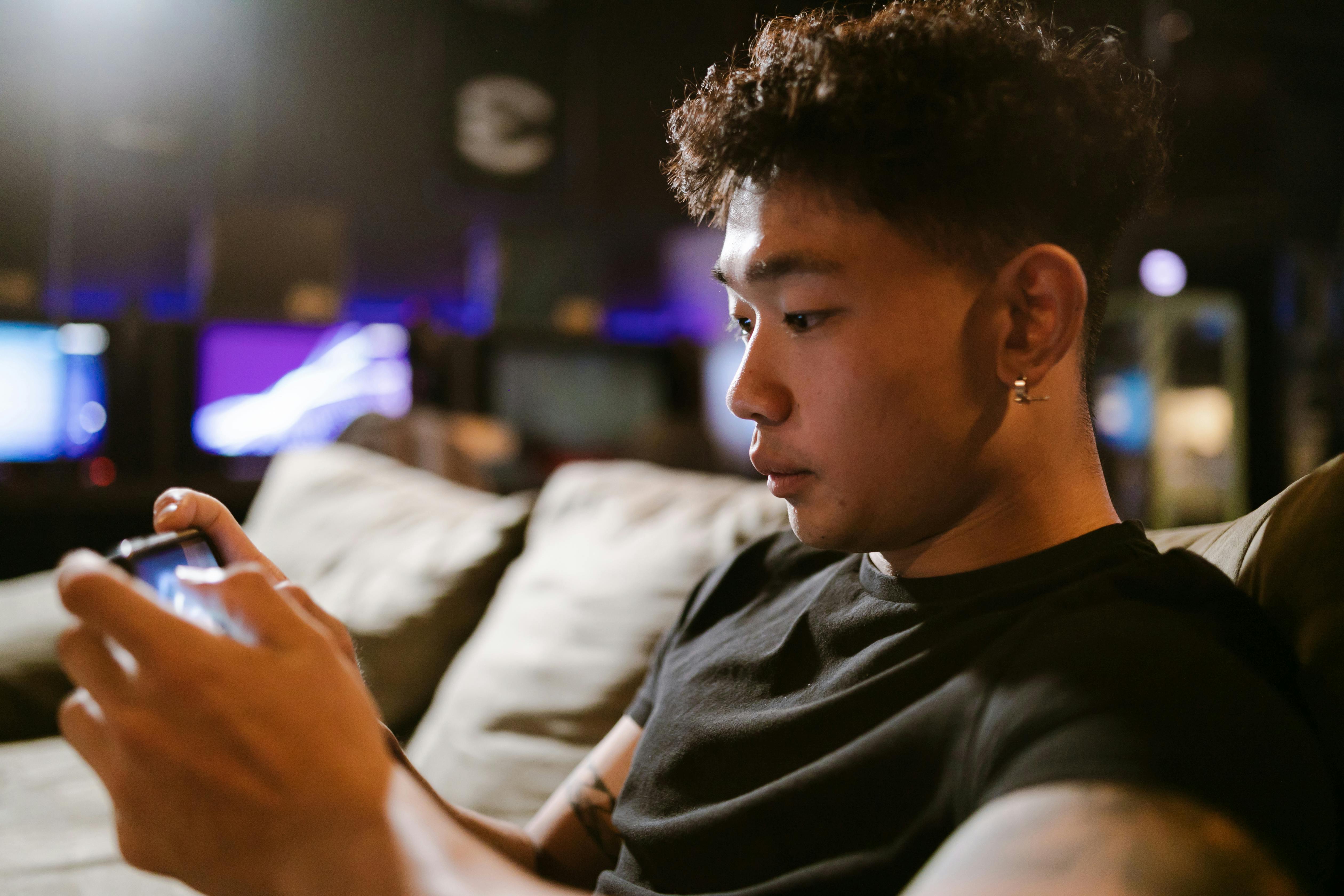By Robert Downer, Associate Director at Bryter
What Are 'Girl Games'?
The phrase "girl games" might conjure up images of pink pixelated ponies, dress-up avatars, or match-three mobile puzzles. It’s a term that has historically been used to belittle, a label often deployed to separate “real” games from those supposedly meant for a softer, more frivolous audience.
But as the gaming industry reaches an estimated $522.5 billion in global revenues, with nearly half of all gamers identifying as women, the phrase demands a closer look.
What lies behind it is not a trivial genre or a niche demographic, but a deeper story about gender diversity in games, the marketing blind spots of the industry, and the resilience of women gamers in the face of exclusion and abuse.
The Numbers Behind the Narrative
This year, the Bryter Women Gamers Study 2024 offers a detailed and often sobering account of the female gaming experience.
It tracks evolving behaviours, spending habits, and preferences among women in gaming, while also examining the persistent toxicity they face. The numbers are compelling: women now make up 46% of gamers worldwide, and yet 28% still say they wouldn’t call themselves a gamer.
That dissonance speaks volumes. Gaming is a central part of many women’s lives, with female gamers averaging 20 hours a week on the hobby. But the community, and crucially, the term “gamer” itself, still does not feel like a safe space.

A Brief History of Girl Games
The idea of girl games originated in the early 2000s, with the rise of browser-based dress-up games, doll simulators, and lifestyle management apps. These games were not without merit, many offered creative storytelling, emotional depth, and intuitive gameplay, but they were rarely treated with the same respect as their action-packed or combat-heavy counterparts.
Today, the term continues to act as a shorthand for titles that are non-violent, narratively rich, and accessible. But framing these as somehow inferior not only distorts reality, it also fuels the perception that women are casual, lightweight participants in gaming culture.
Beyond the Stereotype
In truth, the genres women engage with are far broader than stereotypes suggest. While many women do enjoy life simulations and world-building games, genres often swept under the girl games label, they are also highly active in Battle Royale, shooter games, and action-adventure titles.
Bryter’s data shows significant growth in these genres among female gamers since 2020. The real difference lies not in the skill or seriousness of gameplay, but in motivation.
Women are more likely to be driven by immersion and exploration, while men lean more toward competition and power dynamics. For women gamers, gaming is less about domination and more about storytelling, character development, and emotional connection.
The Marketing Disconnect
The disconnect between women’s actual gaming habits and the industry’s assumptions about them is stark.
This shows up not only in the kinds of games produced but in how they’re marketed. Women are more likely to base their purchasing decisions on peer recommendations, reviews, and watching gameplay videos rather than on flashy, high-octane trailers.
The industry has historically targeted its marketing towards men, making it harder for women to see themselves in the promotional materials, which in turn delays their adoption of new titles. As a result, women often buy fewer games overall, not because of disinterest, but because of a lack of representation.
The Toll of Gaming Toxicity
And then there is the issue of toxicity. Despite modest improvements since 2022, where abuse peaked, 59% of women gamers still experience toxicity from male players. This isn’t merely trash talk.
Of those women experiencing toxicity, one in four is sexually harassed while gaming, 12% have received rape threats. Abuse frequently escalates from verbal insults to stalking and doxxing. In one harrowing account, a woman gamer was told she would be raped and murdered because of how she played a round of Apex Legends.
Another was sent her home address by a male gamer who said he was watching her favourite café. This is the daily reality of gaming for many women. A space that should offer entertainment and community instead becomes a site of trauma.
Hidden Players, Hidden Costs
The consequences of this abuse are profound. A quarter of female gamers avoid speaking in online multiplayer sessions to protect themselves, 14% avoid online multiplayer altogether.
One in four conceals their gender, and nearly a third choose to game only within closed, known communities. This doesn’t just reduce the richness of the online experience, it also limits the growth of franchises, esports teams, and gaming communities by alienating half the population. Women’s withdrawal from public gaming spaces is not an apathy issue; it is a safety issue.
Intersectional Exclusion
For LGBTQ+ women and women of colour, the situation is even more dire.
The Bryter study shows that 52% of women who are both LGBTQ+ and from ethnic minorities experience regular toxicity.
These players are more likely to face a combination of gender-based abuse, racial slurs, sexual harassment, and threats of violence. The compounded nature of this abuse underscores just how far the industry has to go in making gaming inclusive.
Intersectional players are not only underrepresented in games but are also among the most vulnerable in the player base. Their experiences challenge the industry to expand its definition of who games are for, and what kind of protection all players deserve.

Streaming in the Spotlight
Still, amid all the toxicity, women continue to shape gaming culture. From streaming games on Twitch to forming the backbone of social and family gaming trends, they are not merely passive consumers. They are influencers, tastemakers, and community builders.
Yet even in the streaming space, visibility comes with risk. Female streamers are routinely sexualised, harassed, or told they aren’t real gamers. Some use voice changers or hide their faces to avoid backlash. Others create strict community guidelines to weed out toxicity. Unlike many male streamers, their success often depends on constantly managing their own safety.
Where Are the Women in Esports?
One area where the underrepresentation of women is particularly striking is esports. The world of professional competitive gaming has been slow to make space for women. Although female-only leagues exist, they often suffer from reduced funding, lower visibility, and fewer sponsorships.
Mixed-gender competitions are still the exception, not the rule. The result is a pipeline problem, where talented women leave before they ever get the chance to compete at the highest levels. The lack of women in esports reflects not a lack of talent, but a lack of opportunity and protection.
Reclaiming 'Girl Games'
If the term “girl games” once symbolised triviality, it is time to reclaim and redefine it. Games traditionally seen as feminine, whether through aesthetics, mechanics, or tone, are no less valuable, and in many cases, far more innovative in terms of emotional engagement and social design.
The challenge now is to decouple the idea of gender from game quality altogether. Whether someone plays Fortnite or Stardew Valley, Apex Legends or Animal Crossing, what matters is not the gender of the player, but the quality of the experience.
Building a Better Industry
Developers, publishers, and platform holders must take a long-term view. Tackling toxicity, increasing representation, and designing with women in mind is not charity, it is sound business strategy. The data is clear: female gamer statistics point to a committed, diverse, and growing audience. Addressing their needs doesn’t mean abandoning the core gamer base, it means expanding it. It means making room for everyone.
Conclusion: Redefining the Narrative
In the end, the phrase "girl games" reveals more about the industry's insecurities than the players themselves. Women gaming is not a fringe activity. It is a force that is already here, already shaping the future. The only question now is whether the industry is willing to follow where women gamers are already leading.
The stakes are cultural, financial, and human. To build a truly inclusive future, we must dismantle the assumptions encoded in that flippant phrase and start recognising "girl games" for what they really are games that belong to everyone.
To read more about how market research services key sector like healthcare and pharmaceuticals, technology, gaming and B2B markets read our article Bryter - Female Gamers
Get in touch
Ready to move beyond guesswork? Get in touch with one of the insights team if you want to learn more about different approaches to Gaming market research and to understand which methodology may be most appropriate for your insight needs






